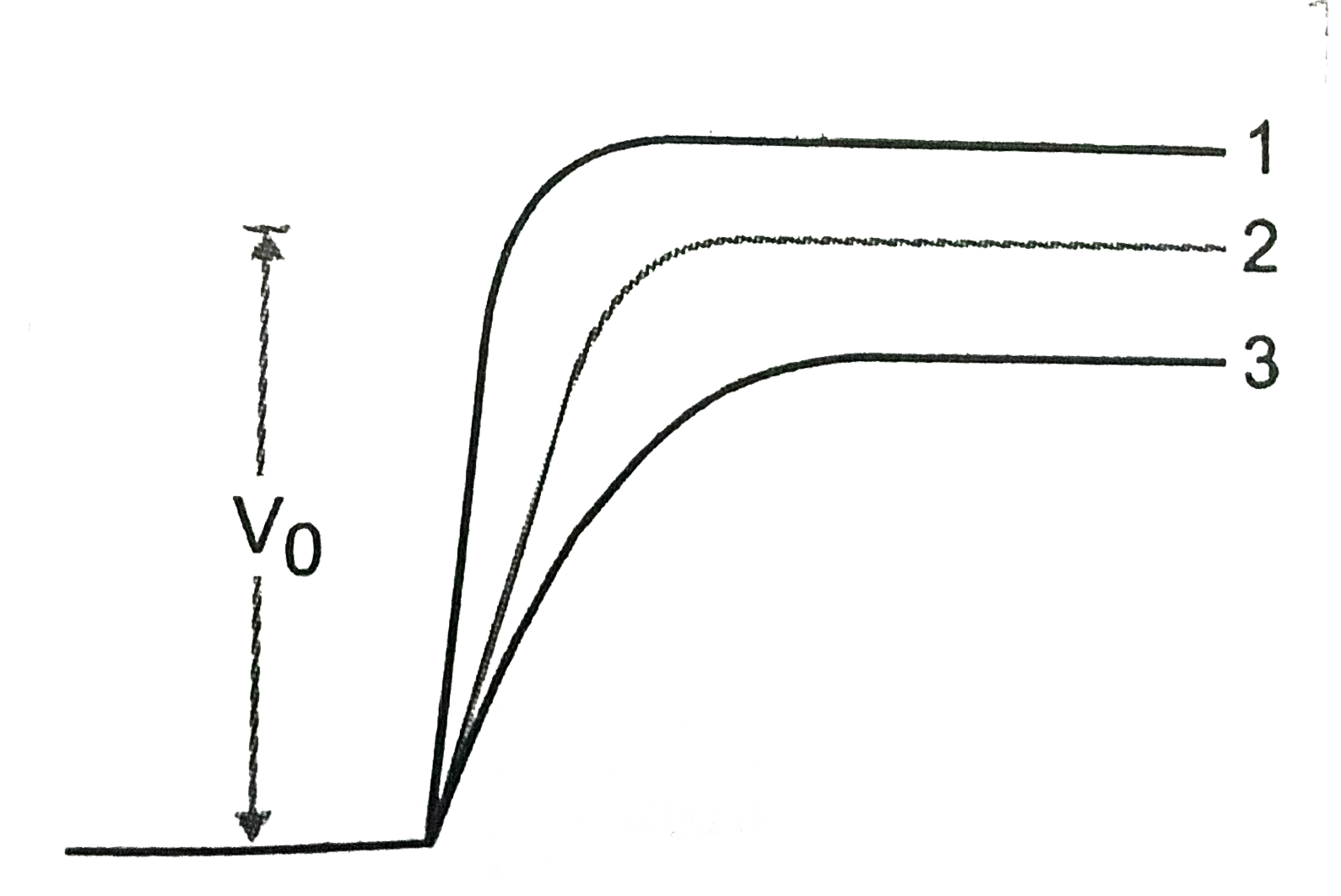In Fig . V0 is the potential barrier across a p-n junction, when no battery is connected across the junction

1 and 3 both correspond to forward bias of junction
3 corresponds to forward bias of junction and 1 corresponds to reverse bias of junction
1 corresponds to forward bias and 3 corresponds to reverse bias of junction
3 and 1 both correspond to reverse bias of junction
The correct Answer is:B
When p-n junction is forward biased, it opposes the potential barrier across junction. When p-n junction is reverse biased, it supports the potential barrier junction, resulting increase in potential barrier across the junction.
Topper's Solved these Questions
- BOOK - PRADEEPCHAPTER - ELECTRONIC DEVICESEXERCISE - LONG QUESTION ANSWER2videos
ELECTRONIC DEVICES
- BOOK - PRADEEPCHAPTER - ELECTRONIC DEVICESEXERCISE - PROBLEMS FOR PRACTICE7videos
ELECTRONIC DEVICES
- BOOK - PRADEEPCHAPTER - ELECTRONIC DEVICESEXERCISE - HIGHER ORDER THINKING SKILLS1videos
ELECTRONIC DEVICES
- BOOK - PRADEEPCHAPTER - ELECTROMAGNETIC WAVESEXERCISE - II Focus multiple choice question5videos
ELECTROMAGNETIC WAVES
- BOOK - PRADEEPCHAPTER - ELECTROSTATICSEXERCISE - ASSERTION-REASON TYPE QUESTIONS2videos
ELECTROSTATICS
Similar Questions
Knowledge Check
- Question 1 - Select One
The potential barrier at PN junction is due to
Afixed acceptor and donor ions on either side of the junctionBminority carriers on either side of the junctionCmajority carriers on either side of the junctionDboth majority and minority carriers on either side of junction - Question 2 - Select One
The potential barrier at a p-n junction is due to charges on either side of the junction.
These charges areAfixed donorBfixed acceptorCinfinite donorDboth a and b - Question 3 - Select One
In forward bias, the width of potential barrier in a P−N junction diode
ARemains constantBDecreasesCIncreasesDFirst (1) then(2)
Can the potential barrier across a p−n junction be measured by simply connecting a voltmeter across the junction ?
View SolutionHow is a potential barrier formed in p-n junction diode ?
View SolutionVoltage drop across a p-n junction in forward bias is 0.5 V a battery of 2V is connected across the p-n junction such that the maximum current does not exceed 10 mA calculate the value of resistance to be connected across the diode
View SolutionIn a p-n junction diode without any battery
View SolutionA charge is moving across a junction, then
View Solution

